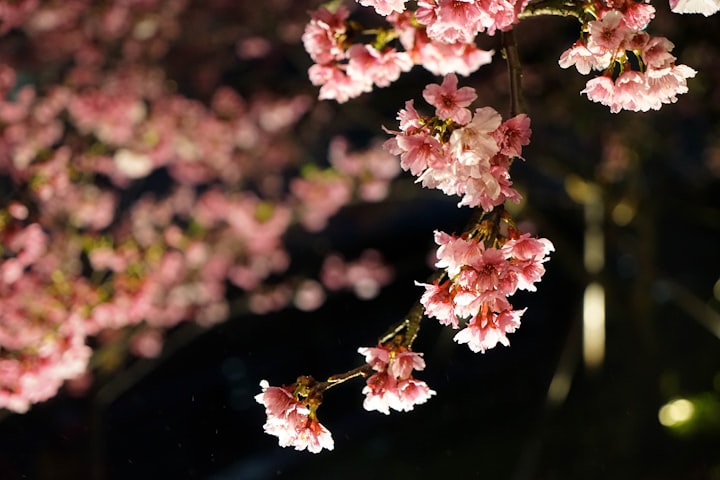Saving the Bees
Bee Conservation Holds the Keys to our Sustainable Future

The humble bee, tiny in stature, packs a lot of power to elicit fearful emotional responses from us much larger humans, with a bend toward the bee's destruction. That sad end could be the finale of us all.
Granted I am not addressing those whose allergy to a bee sting could lead to anaphylactic shock, but to the general malaise with which bees are received, treated, or mythologized. Growing up, I remember having the Fear of Bee lectured into me like it was the Fear of God. Thankfully, I rapidly shed that maladaptive way of thinking about our planetary black-masked saviors, fashionably attired in an array of black and golden stripes, with pollen accessories.
The Bee in My Garden above is sporting an almost fur-like attire, with the evening sunlight glinting in her eye. She seems to have paused for a sip. Yes, bees that collect pollen and nectar are female worker bees.
I like this photo because it was one of the first I had taken that showed a bee doing the essential bee behavior of sipping nectar with her bee tongue, or proboscis, inside the tiny white flower, while also collecting pollen.
The Bee's continued act of pollination is what guarantees our continued sustainable future on our planet Earth. We cannot fear them, nor kill them, but must learn to live with, and appreciate them.
**********
I have photographed bees, spiders, praying mantis, dragonflies, and birds for years. I find them, or they find me, while randomly going about our respective engagements in and around my yard, but then we have to stop and look at each other. So we do.
As I began to be concerned about dwindling numbers of bees decades ago and learned more about bee conservation, I began to plant bee friendly flowers to attract bees and to keep them coming back! Echinacea works wonders, as noted below:

This bee had been meandering calmly over several Echinacea blooms until she stopped in all her furry glory, with a winged transparent cape, as if posing. I loved the mix of textures and tapped my screen for the shot. I love the photo.
But I had been watching this bee for some minutes during her leisurely stroll and noticed something interesting. Since it was early morning, she was not laden with pollen on her legs. She was calm, just starting her working day, and not bothered by my presence.
This side-shot below was taken seconds before the omniscient one above, and clearly shows her legs are pollen-free. The visible thick, black, back-leg segment acts like a pallet knife, effectively scraping pollen up into the characteristic balled shape. I have obviously watched bee behavior for a long time.

**********
I love the ease of photographing with my smartphone, which does not have a clicking-shutter sound like an SLR camera. That sound can effectively startle especially the wary bee. I try to always photograph bees in-situ, managing depth-of-field and framing the shot in my phone before silently tapping the screen. That way, I can get very close, often only 2-3 inches away.
However, I always stop and observe the bee for a while to assess its energy and intentions. A bee heavily laden with pollen on her body and legs often avoids landing on a flower, but flits, seemingly angrily, from bloom to bloom as if saying, "I've had enough of this task today!"
The bee will circulate between and hover over several flowers in a sequence before flying off. In this case, I focus my lens on a flower to which the bee has shown previous interest. If she crosses my frame, I tap, and capture Ms. Bee if she decides to rest for a microsecond!
I have written about my photography and editing techniques, including with bees, in a previous Vocal article. Please check it out here, with my much-loved photo leading the story:
**********
My personal reflections about bees, and my observations about their behavior are certainly meant to demonstrate that we are not embattled by the humble bee, but should see them as the key to our sustainable future.
I first learned about planting bee-friendly gardens from my Brazilian friend Bel Harris, when she lived in the States almost 20 years ago. She had planted herbs that attracted bees to her garden and challenged me to do the same. Due to Bel, I plant flowers, herbs, and plants that bloom year around, in support of the bees.
Bel has been my example in championing bee conversation because, upon returning to Brazil, she has developed a business that designs and plants sustainable bee gardens. Please enjoy this video from her Facebook page. What gorgeous flowers!
(https://www.facebook.com/bel.harris.5/videos/4034663919974066)
**********
Perhaps if poet William Carlos Williams had written about Bees instead of Wheelbarrows, we would have seen long ago that championing bees for the future of our sustainable life on Earth is an absolutely necessary act of conservation. Please click the link here to read Williams' poem, and my interpretation with Bee Conservation in mind follows:
(https://www.poetryfoundation.org/poems/45502/the-red-wheelbarrow)
The Humble Bumblebee (by Cynthia Fortner)
So Much depends upon
.
the humble bumblebee
.
washed in sunshine while
.
pollinating our futures.
**********
Please heart my story, read my others, and send tips, especially toward your chosen organization for conservation.
About the Creator
Cynthia L Fortner
I like words, their etymologies, as meaning comes from memories, histories, that little internal voice, barely a birdy chirp. Words are a performance of meaning psychologically. So, I like memoirs, writing them, birds, flowers, and seasons.






Comments
There are no comments for this story
Be the first to respond and start the conversation.